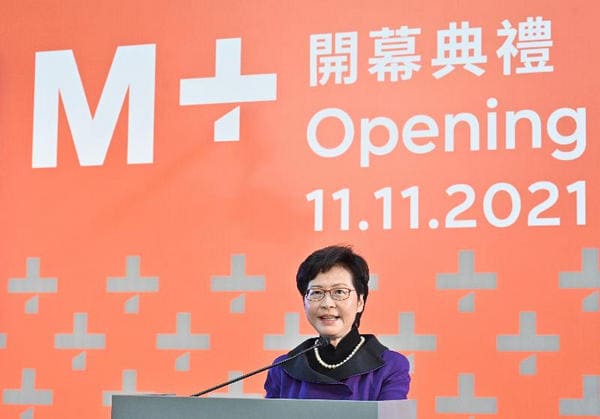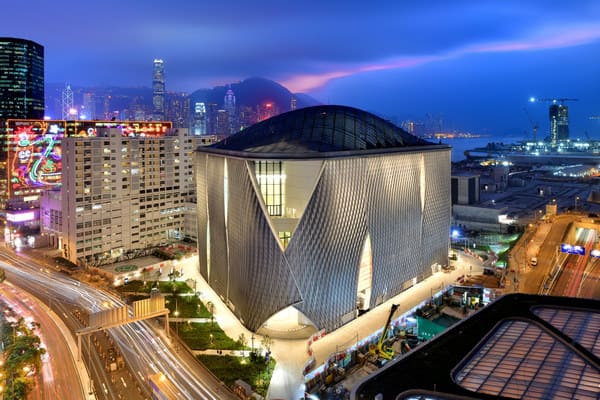
Hong Kong’s vibrant culture
Hong Kong is a city of curiosities. A city where skyscrapers pierce through the clouds but with a dynamic cultural landscape lying underneath the glass and steel skyline. The city is home to a myriad of contemporary and classic venues where the collections and installations are often eclectic and insightful, reflecting the best of the city, Asia and beyond. With its unique cultural and historical background, Hong Kong has a vibrant arts and culture ecosystem and is a place where different cultures meet, mix and bloom and where the new and old co-exist side by side.
From drama to dance and pop music to Chinese opera, Hong Kong has become the centre of Eastern and Western performing arts. There are over 1,000 performing arts groups in Hong Kong, staging as many as 8,000 performance art shows and attracting an audience of over 3 million every year. Hong Kong is also one of the world’s largest art auction markets. Top-tier galleries such as the Gagosian and White Cube aside, Christie’s and Sotheby’s auction houses also have major operations in the city. Hong Kong’s art trading industry has been booming in recent years - Hong Kong became the second-largest art trading centre in the world in 2020, just after New York.
Creative industries are important economic drivers for Hong Kong, enhancing its innovation capacity and driving its growth in the future. Resources are devoted to nurturing young talent, opening new design markets, and enhancing Hong Kong’s status as a city of excellence in music, film, design, and architecture. Amongst all, the well-established film industry has been a strong pillar of the creative industry in Hong Kong. To promote cultural co-operation, Hong Kong has signed memoranda of understanding on cultural co-operation with 20 countries, which facilitate cultural activities such as staff exchanges, education, training, research and business matching.
Despite Hong Kong’s small size, it has been exporting more films than most other economies in the world. Film historians such as David Bordwell once said that Hong Kong has produced “the world’s most energetic, imaginative popular cinema”. Not surprisingly, Hong Kong films are regularly featured at major
European film festivals.
 Conceptualised as one of the world’s largest cultural hubs, Hong Kong’s West Kowloon Cultural District (WKCD), an unprecedented investment of the HKSAR Government in arts and culture, occupies 40 hectares of land on the westernmost tip of the Kowloon peninsula. This cultural hub contains a range of excellent cultural facilities – museums, galleries, theatres, and studios – raising the bar for what the city can achieve in the world of modern and contemporary art. The WKCD started operation in 2019 with the opening of the performing arts venue of Freespace, the Xiqu Centre for Chinese opera and a modest arts pavilion for visual arts.
Conceptualised as one of the world’s largest cultural hubs, Hong Kong’s West Kowloon Cultural District (WKCD), an unprecedented investment of the HKSAR Government in arts and culture, occupies 40 hectares of land on the westernmost tip of the Kowloon peninsula. This cultural hub contains a range of excellent cultural facilities – museums, galleries, theatres, and studios – raising the bar for what the city can achieve in the world of modern and contemporary art. The WKCD started operation in 2019 with the opening of the performing arts venue of Freespace, the Xiqu Centre for Chinese opera and a modest arts pavilion for visual arts.
The centrepiece of WKCD is the M+, Hong Kong’s new visual cultural museum, which opened its doors to the public on November 12, 2021. Designed by a global team of the world-renowned architectural firm Herzog & de Meuron, the M+ is a multi-disciplinary museum with an international collection of contemporary art dedicated to collecting, exhibiting, and interpreting visual art, design and architecture, moving image, and Hong Kong visual culture of the twentieth and twenty-first centuries. It was designed with the intention to be more than a museum. Around 1,500 works drawn from the M+ Collections will be presented in the 17,000 square-metre exhibition space spanning across 33 galleries and other display spaces in the museum. The M+ underscores the significance of Hong Kong’s cultural ecosystem.
Henry Tang Ying-yen, Chairman of the Board of the West Kowloon Cultural District Authority, rightly noted that the “M+ marks a major milestone in delivering the vision for the development of the WKCD as a vital contribution to the future of Hong Kong, building on its reputation as one of the world’s leading arts and cultural hubs.” A magnifcient achievement, the M+ possesses all the qualities needed to take its place with other major art museums around the world. It is one of the largest contemporary art museums in the world, nearly twice the size of London’s Tate Modern.
The HKSAR Government continues to support the creative industries: in the 2021-22 Budget, an additional injection of EUR 110 million for the CreateSmart Initiative to drive the development of the creative industries was announced. Furthermore, an additional allocation of EUR 102 million has been earmarked for the Art Development Matching Grants Scheme to promote culture and arts from all sectors. Moreover, Hong Kong’s position will be further boosted by the National 14th Five-Year Plan of the People’s Republic of China, in which Hong Kong is encouraged to be developed into a hub for arts and cultural exchanges between China and the rest of the world.
Read more about the M+ Museum here.
